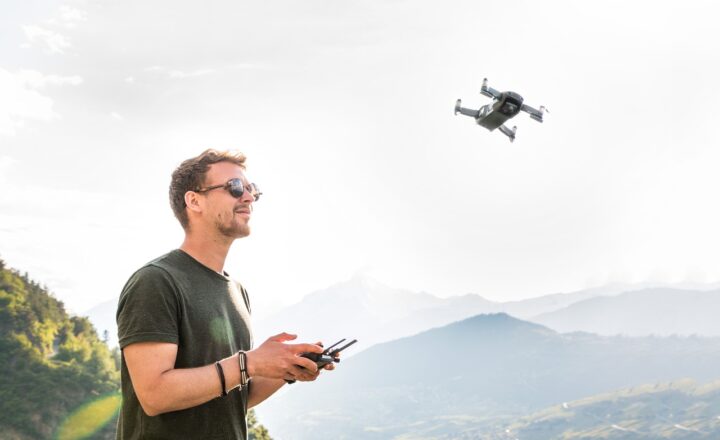Quadcopters and Delivery Services: Could Drones Become the Future of Home Delivery?
November 14, 2024

In recent years, the rise of drones, particularly quadcopters, has caught the attention of consumers, businesses, and regulatory bodies alike. These unmanned aerial vehicles (UAVs) are not only transforming various sectors but also paving the way for a new approach to home delivery services. As we delve deeper into the possibilities and challenges of integrating drones into our daily lives, it’s worth exploring whether quadcopters could indeed become the future of home delivery.
1. The Potential of Drones in Home Delivery
The concept of using drones for delivery is not just a futuristic dream; several companies have already begun testing and implementing drone delivery services. These innovative machines could potentially revolutionize how packages are delivered to consumers.
Key advantages of drone delivery include:
- Speed: Drones can significantly reduce delivery times by flying directly to their destination, bypassing road traffic and other obstructions.
- Accessibility: Drones can reach remote or hard-to-access locations that might be challenging for traditional delivery vehicles.
- Cost-effectiveness: With advancements in technology and scale, the operational costs of using drones may be lower than conventional delivery methods in the long run, particularly for last-mile delivery.
This model of delivery is particularly appealing as consumers increasingly demand faster and more convenient shipping options. Major retailers and logistics companies are looking to streamline their services and tackle the challenge of high delivery costs, presenting an ideal landscape for drone integration.
2. Current Applications of Drone Delivery
Several companies have initiated pilot projects and limited deployments within specific regions, showcasing the viability of delivery drones:
– Amazon Prime Air: Amazon has been conducting tests for its drone delivery service, aiming to deliver packages to customers within 30 minutes by utilizing UAVs.
– Wing: A subsidiary of Alphabet Inc., Wing commenced drone delivery services in Australia and the U.S., providing consumers with essentials from local businesses directly to their doorsteps.
– Zipline: Initially focused on delivering medical supplies in hard-to-reach areas, Zipline has proven the effectiveness of drones in urgent deliveries, prompting interest in expanding its services to consumer goods.
These companies are pioneering the future of drone logistics and influencing consumer expectations regarding delivery times.
3. Technological Innovations Enhancing Drone Delivery
The rapid evolution of drone technology plays a crucial role in paving the way for efficient delivery services.
Some notable innovations include:
- Autonomous Navigation: Advanced sensors and GPS technology allow drones to navigate complex urban environments with minimal human intervention. This ensures accurate and safe deliveries.
- Increased Payload Capacity: Modern drones are designed to carry heavier loads, thus enabling the transportation of a wider variety of products.
- Battery Efficiency: Improvements in battery life and charging technologies extend flight times, permitting longer-range deliveries without needing frequent recharges.
These technological advancements boost the practicality of utilizing drones for consistent and reliable home deliveries, addressing some of the earlier limitations faced by drone technology.
4. Overcoming Challenges in Drone Delivery Implementation
While the prospect of drones as delivery tools is enticing, there are significant challenges that must be navigated:
– Regulatory Hurdles: Regulatory frameworks around airspace usage vary by region and often restrict drone operations, especially in urban settings. To facilitate widespread adoption, regulations need to be established that balance innovation with safety.
– Public Safety Concerns: The operation of drones raises issues regarding noise pollution, privacy, and air traffic safety. Public acceptance is crucial for successful deployment, necessitating transparency and communication from companies about their use of drones.
– Technical Limitations: Weather conditions can greatly impact drone performance. Rain, snow, high winds, and other unfavorable conditions may hinder the effectiveness and safety of drone deliveries.
Addressing these challenges is essential for companies seeking to adopt drones for home delivery solutions effectively.
5. Future Outlook for Drones in Home Delivery
The integration of drones into home delivery services offers a glimpse into a future characterized by speed, convenience, and efficiency. As technology advances and regulatory hurdles are overcome, we can anticipate a growing presence of drones in urban environments.
Consumer acceptance will be pivotal—a shift in mindset towards embracing drone technology for everyday logistics is necessary. Once public concerns are adequately addressed through proper governance and education, the prospects for drones in delivery services could be bright.
As we move forward, collaborations between technology firms, delivery companies, and regulatory agencies will likely shape the landscape of drone delivery, making it a central feature of modern logistics systems.
Conclusion
In summary, the potential for quadcopters to revolutionize home delivery services is immense, with numerous companies already testing and deploying these technologies. As improvements continue to be made in drone design, navigation, and delivery protocols, it becomes increasingly likely that drones will play a significant role in last-mile delivery solutions in the near future. Preparing for this change involves acknowledging the challenges, benefits, and responsibilities of using drones in an ever-evolving technological landscape.
With ongoing advancements and the willingness to adapt to the future, quadcopters may very well be the answer to the quest for faster, more efficient home delivery options.






